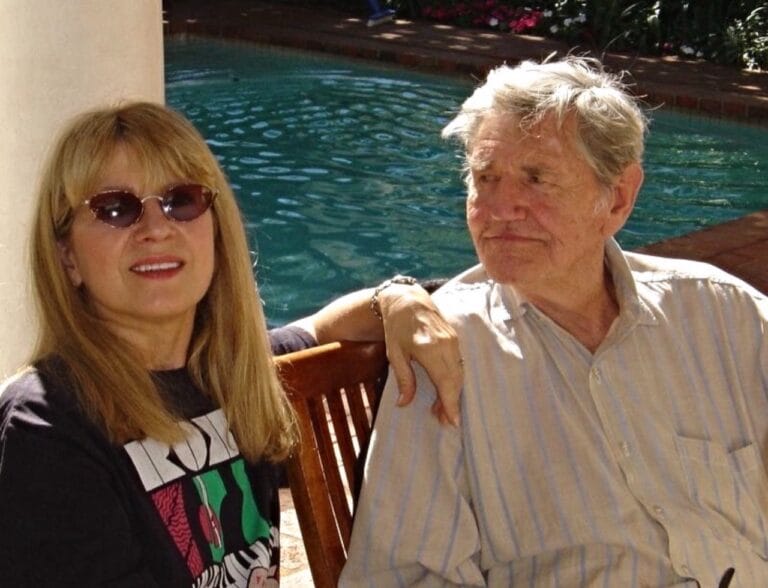Aviation devotee and journalist John Miller bemoans the demise of some of the world’s most iconic commercial aircraft. In Jumbo Sunset, he tells how he longs for the time when Covid-19 will be a thing of the past and he’ll be able to fly again.
Not long ago the night skies were lit up by lights from the Airbus A380 and Boeing 747 aircraft, but Covid-19 has not just killed hundreds of thousands of people across the world, its effect on world travel will result in these aircraft becoming relics of the past.
Aeroplane enthusiasts tend to mourn the demise of any aircraft, but some of the planes, in particular, will be sorely missed. Arguably the most legendary of the fatalities is the A380 – Airbus’s answer to the original jumbo jet, the aforementioned Boeing 747 with its distinctive hump. The A380 remains the largest civilian aircraft yet to take to the skies.
Most aviation lovers are divided into two camps – we’re either Boeing or Airbus devotees. A bit like it was back in the day that one had to declare loyalty to Cliff or Elvis or the Beatles and The Rolling Stones.
For me, a self-confessed Airbus fanatic, boarding the A380 for the first time was heavenly. I’d been in love with air travel since I was taken as a child to the airport in what was then Salisbury, Rhodesia, to listen to aircraft taking off and landing. (For those who do not know me or who have not previously read my features, I lost my sight as a young boy.)
To this day, the sound of jet aircraft and the smell of jet fuel is an exhilarating experience for me. While some blind people are able to tell the make of a car by the sound of its engine, I’ve always been able to differentiate between the Boeing and the Airbus.
I’ve also been known to change travel plans in order to select one aircraft or another in my eagerness to fly in as many different types of planes as possible.

In the past 50 years, more than 15,000 so-called jumbo jets and their variants were built. While I’ve not had the privilege of visiting the factory in Toulouse, France, where the A380 and other Airbus planes were built, many years ago I had the good fortune of being invited to America to visit Boeing’s Everett factory in Washington, their airport assembly building, which was the largest building in the world by volume and in its heyday accommodated 30, 000 employees. (With reference to Covid-19, a notice on their website says it is closed until further notice.)
The Boeing 747 first took to the skies in 1970. There would later be three different configurations of the B747 – all passenger, all cargo and a combination of the passenger and cargo models.
Pan Am was the first to purchase B747-100 aircraft – 25 in all. Like the later Airbus A380, the Boeing 747s used four engines to power them. The B747-400 model was the most popular with almost 700 built since 1989.
The double-decker A380 made a grand entrance when Singapore Airlines took delivery of the plane and their maiden flight took off on 25 October 2007, filled to capacity with 625 very excited passengers. The A380 was in fact designed to carry up to 853 passengers, but most airlines configured their seating to accommodate between 400 and 600 people on the upper and lower decks.

In the A380’s 13-year history, just over 250 of these giant planes were built and delivered, 115 of which were manufactured for Emirates, their most enthusiastic supporter.
Like me, many aviation lovers couldn’t wait to board and take a seat on this enormous sky bird. First-class customers could even take a shower while flying at 30,000 feet.
At the time, the appeal of both the A380 and the 747-400 was the distance they could each fly, but both guzzled gas and became too expensive.
Following this year’s virtual collapse of international travel, British Airways, with the largest fleet of 747-400s, decided to retire this model and recently announced its fleet of over 30 Boeing 747-400s were now officially destined for the scrapheap.
Some will no doubt say it’s about time, as the original version of the 747 aircraft first took off 52 years ago in 1968. Airlines around the world are expected to follow suit especially since Boeing announced it would stop production of all models of 747 aircraft.
For their part, Singapore Airlines returned the first two A380s they bought to their manufacturers in France, where they were given their funeral rites before being dismantled for scrap.
I’m not sure when air travel will become a viable option for me again, so I ask a little indulgence as I dream of days gone by when I was a regular air passenger starting in the early 1960s. I’ve been there and back on Boeing models that include the B707, B727, B737, B747, B757, B767, B777 and the B787. I also had an unforgettable trip on the incomparable Concorde.
Apart from the 787, all Boeing aircraft are incredibly noisy unlike the entire Airbus fleet and yet most cabin crews prefer the layout of the Boeing planes, but not I. I have also been a passenger on all the Airbus models from its first commercial plane – the world’s first digital fly-by-wire plane, the A320 – the A318, A319, A321, A300, A310 A330, A340 A380 and most recently, their newest beauty the A350 XWB.
I’m sure I’m not the only aircraft junkie who hopes examples of the B747-400 and the A380 will be preserved somewhere so that us flying freaks can visit and admire them with the respect they deserve, much like the spectacular supersonic Concorde. Originally owned by British Airways and Air France, the airlines still own 12 Concordes between them, five of which are on display in museums.
So it’s not only for health and hugging that I long for the day when Covid-19 stops being an issue. It is to rekindle my love of flying and to be able to pay homage to the former giants of the skies.
Until then, it is with unashamed sentiment that I say RIP to the jumbo jets, that will soon all be gone but not forgotten.
Top photo: John Miller and his dog Poppy





